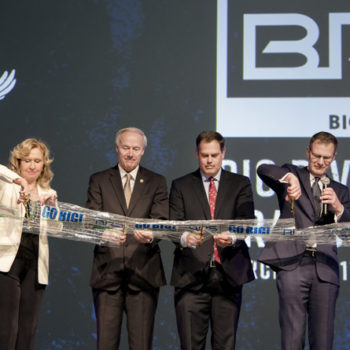Loyola Medical Research Center Receives LEED Gold Certification
- Posted by Gaby
- On March 14, 2017
- 0 Comments
- Center for Translational Research and Education, Chicago, CTRE, LEED, LEED Gold, Loyola, Loyola University of Chicago, Maywood, SmithGroupJJR, Solomon Cordwell and Buenz, Transsolar, USGBC
MAYWOOD, Ill. — Loyola University Chicago’s Center for Translational Research and Education (CTRE) in Maywood received LEED Gold certification in December 2016. The medical research and education center first opened in April 2016 on the university’s Health Sciences Division campus.
The CTRE was a collaborative initiative of Loyola University Chicago, Loyola University Health System and Trinity Health. The architect on the project included Solomon Cordwell and Buenz (SCB) in Chicago, with SmithGroupJJR, also in Chicago, providing civil engineering services and fit-out on the project, as well as programming, lab and vivarium planning, according to a statement. This five-story, 227,000-square-foot building had a budget of $137 million, and holds 500 students, faculty and staff.
As the design-team on the project, SCB focused on creating flexible, state-of-the-art laboratory spaces and a variety of office and spaces for collaboration on the upper floors, and a ground floor that is more accessible to the public, complete with an auditorium for large lectures and health-related community events, according to a recent statement.
The design team consulted with the Transsolar KlimaEngineering team in New York for the sustainability elements of the building. The team’s approach to sustainability concentrated on environmental stewardship, energy efficiency and interior environmental quality, which all helped to gain the LEED Gold status for Loyola’s CTRE, according to a statement by Transsolar.
The research laboratories in the building are designed to let in lots of natural light to reduce the need for artificial lighting, and are surrounded by a naturally well-ventilated area for laboratory write-ups. Exterior shading devices were installed to allow for shade in the summertime, and an allowance of more sunshine in the winter. The exterior walls of CTRE provide the maximum amount of insulation possible, and the windows can be opened by the building’s occupants to allow for natural cooling in the spring and fall.
“While CTRE is the biggest and most complex building the university has ever built, it also has a relatively small environmental footprint,” said Peter Schlecht, Loyola University Chicago’s senior project manager. “CTRE uses 30 to 40 percent less energy than a standard research building that meets energy codes, and is more energy-efficient than at least 90 percent of comparable research facilities.”



0 Comments